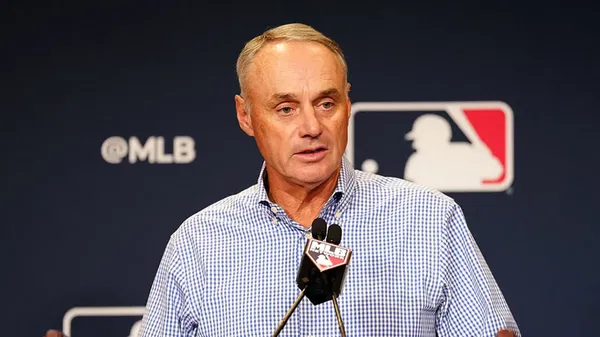

Just when the current CBA is about to end, discussions regarding the much-hyped salary cap are once again rising. The current CBA will end in December 2026, and this time, it is a make-or-break situation for the league. The 2025 MLB season has already started, but there’s always an eye toward the future — a future with a different economic model in MLB. However, considering the previous issues with salary caps, speculations are rife that the upcoming economic model will come with a few interesting changes.
“I’m sympathetic to fans in smaller markets who go into the season feeling like they don’t have a chance in the world to win,” the MLB commissioner, Rob Manfred, said, indicating the potential application of a salary cap.
Remember the 1994-1995 work stoppage over the salary cap? On August 12, 1994, players went on strike as owners suggested capping salaries in the CBA. The strike lasted 232 days and resulted in the cancellation of 948 games, including the 1994 postseason. The entire baseball community is again on the brink of the same situation with the current CBA coming to an end. But why not a salary cap to ensure competitiveness among the teams?
ADVERTISEMENT
Article continues below this ad
“A cap is an artificial lever that is the ultimate salary restrictor, independent of where you are on the salary food chain,” the MLBPA president, Tony Clark, said.
So, an amended CBA with a few changes could be on the table?
“The best outcome — for both teams and players — would be a salary cap/revenue-sharing system, which would promote competitive meritocracy and eliminate economic risk faced by both players and teams of a revenue/salary imbalance,” Joel Litvin, former president of league operations for the NBA said.
So, how will this revenue-sharing model be beneficial for the players? Well, as per reports, MLB’s revenue increased by 4.1% in the last 10 years. In contrast, the players’ average salary increased by 3% in the same period. That’s a loss of $2.3 billion for the players. “Had salaries been tied to revenues (as they are in the other leagues), the players would have earned an additional $2.3 billion in salaries over that period,” CNBC quoted Litvin. But will the revenue-sharing model help the smaller teams to compete with the upper-tier ones?
While the players’ association is still not on the same page with the salary cap, the salary floor could be a counter. Yes, unrestricted spending caused a few astronomical deals like the $765 million for Juan Soto and $700 million for Shohei Ohtani. That leaves the low-tier teams gasping for survival. However, with a salary floor, small-market clubs would have to pay greater compensation for their 26-man rosters. This could help tip the scales in favor of the MLBPA.
That’s how the NFL works, but will this work for MLB?
What’s your perspective on:
Will MLB's salary cap finally level the playing field, or just widen the gap further?
Have an interesting take?
ADVERTISEMENT
Article continues below this ad
What can the NFL do but the MLB can’t?
When it comes to competitiveness among the teams, nothing comes close to the NFL. The only reason behind its meteoric rise to popularity. It is all because of their centralized media rights. The NFL negotiates and distributes media rights revenue to its teams, and the league manages these rights centrally. Instead of depending only on local media deals, this structure makes sure that every team gains from the league’s overall performance. Things are entirely different in MLB. Here, local media rights are causing discrepancies among the teams.
MLB teams have mainly relied on local channels to broadcast a large portion of their games, even when those games are nationally televised. For example, teams like the Dodgers and Marlins have their media rights deals with Charter Communications. Now, with both teams playing an equal number of games each season, the Dodgers are making $300 million per year, and the Marlins are making $50 million per year. Why? The Dodgers are ahead in terms of market size, popularity, big names, and stadium attendance. That’s where the salary disparity starts.
Hence, what works fine with the NFL will not work with MLB. It would be a better scenario in the league if MLB could opt out of its current RSN-dominated media model that will end in 2028 and go for an NFL-like model. Once the national media rights are implemented, a revenue-sharing model can work with the teams. The smaller teams will have an equal share of the media rights, and they could be forced to opt for a salary floor. Imagine both the Dodgers and Marlins are getting equal media deals and offering 90% of the amount for free agents. That’s what equality looks like.
ADVERTISEMENT
Article continues below this ad
A change is coming in the next CBA, whether in the form of a salary cap or not. However it goes, competitiveness among the teams can only help MLB move forward.
ADVERTISEMENT
ADVERTISEMENT
ADVERTISEMENT
ADVERTISEMENT


Will MLB's salary cap finally level the playing field, or just widen the gap further?